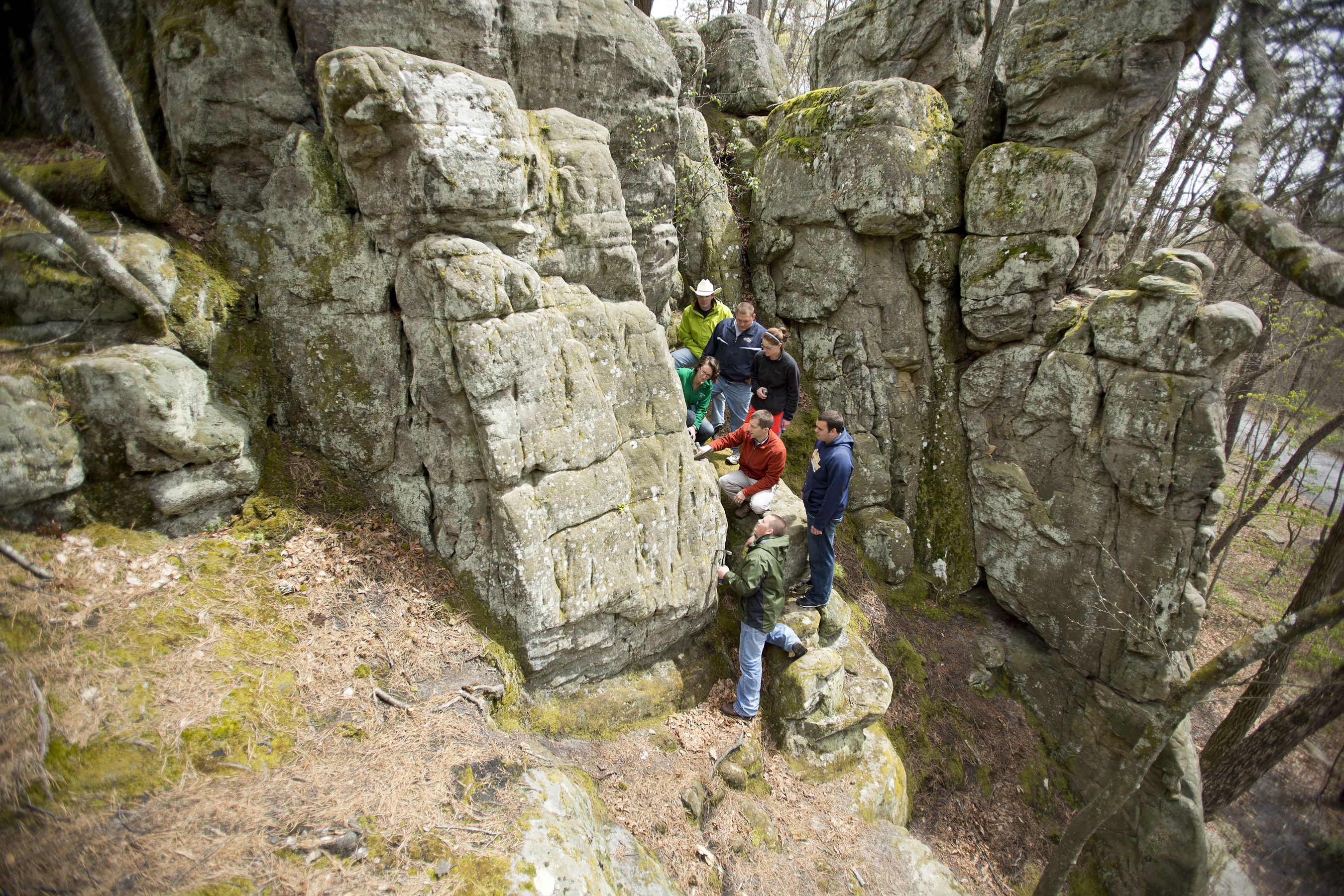As early as their sophomore year, students gain access to sophisticated and high precision instruments. Students routinely use our:
- JEOL Scanning Electron Microscope, with Oxford INCA EDS, and Gatan cathodoluminescence imaging abilities
- Scintag PAD V Powder X-Ray Diffractometer
- Zeiss and Leitz petrographic microscopes
- Dionex Ion Chromatograph
- Hach field spectrophotometer
- Fluid Inc., heating and freezing stage for fluid inclusion microthermometry
Students have ready access to our rock, fossil and mineral preparation labs, which include facilities, for crushing, cutting, polishing and sectioning samples, performing grain size analyses.
Laboratories are supported by very extensive rock, mineral and fossil collections.
Our Environs
Huntingdon is situated in one of the most geologically exciting, accessible and interpretable settings in North America. Our immediate environs present opportunities for investigation of geologic processes, examination of sedimentary rocks and structures, collection and study of diverse fossils from a substantial part of the Paleozoic rock column, and interpretation of regional geological history with an accessibility and variety that is hard to match. We try to make the most of this outstanding setting.
Raystown Environmental Field Station: a 365-acre watershed on Lake Raystown equipped with monitoring wells for hydrogeologic investigations and both instructional and living facilities for overnight stays or semester-long sojourn.
Field study: Most of our courses include field trips, either taking advantage of our extraordinary local setting, or taking students on multi-day field trips, such as to localities in Kentucky, Vermont, Virginia, New York and Ontario. The department maintains its own tents, stoves, compasses, and other basic camping equipment to support these excursions.


